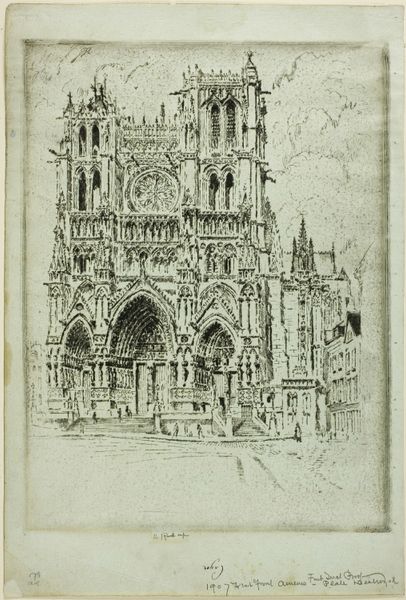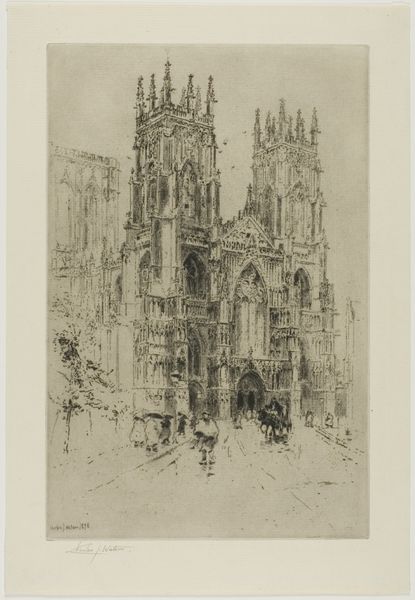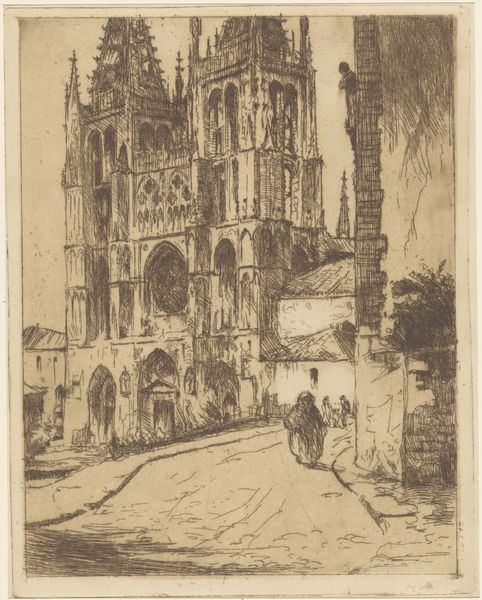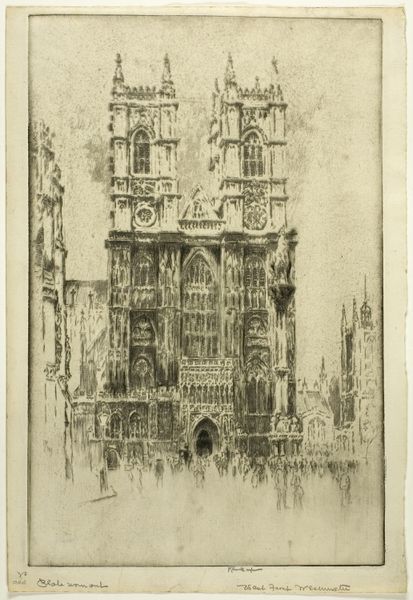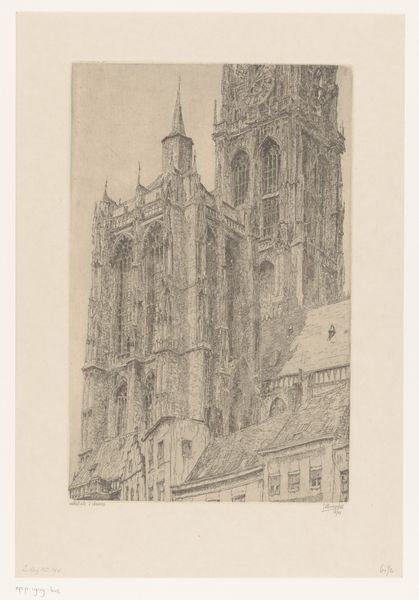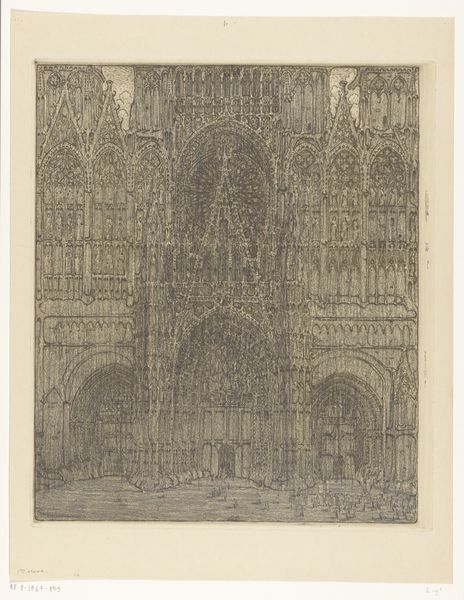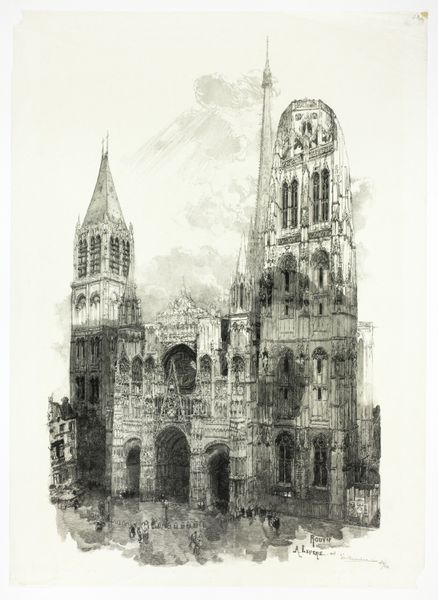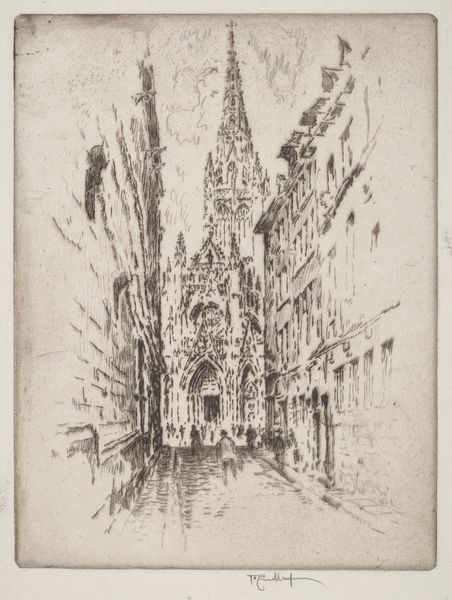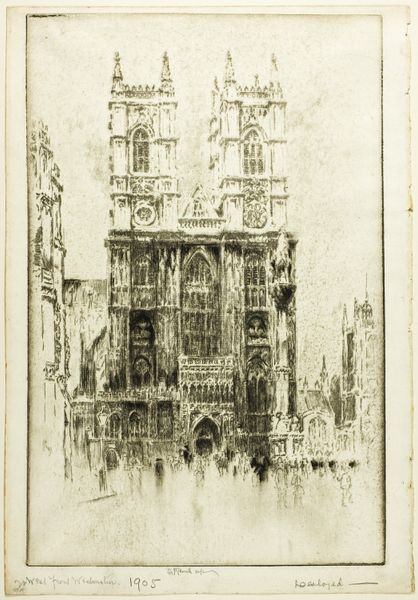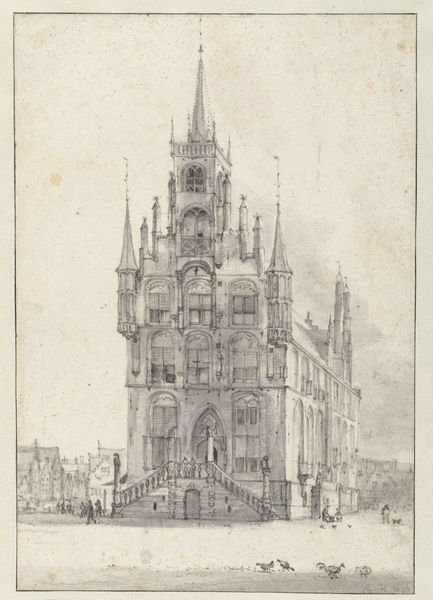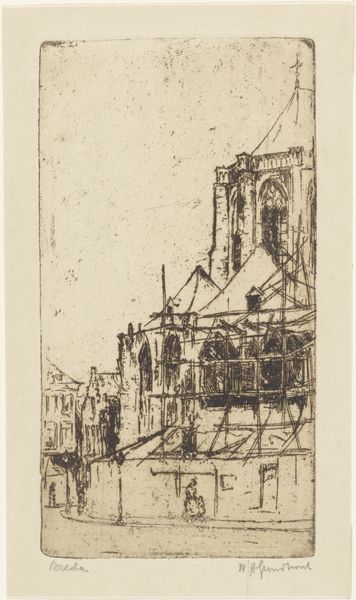
Dimensions: 302 × 226 mm (image); 333 × 255 (sheet)
Copyright: Public Domain
Joseph Pennell made this etching, The West Front, Amiens, using metal and acid, sometime between the late 19th and early 20th centuries. The printmaking process is crucial here. Pennell would have painstakingly drawn the image onto a metal plate with a waxy substance, then submerged the plate in acid. The acid bites into the metal where exposed, creating recessed lines that hold ink. This is then pressed onto paper, transferring the image. Look closely, and you can see the delicate web of lines that give the cathedral its form. The etching technique allowed Pennell to capture the cathedral's intricate details and grand scale, translating the weight and texture of the stone into a visual language of light and shadow. But more than that, the printmaking process democratized the image. Unlike a unique painting, an etching can be reproduced, making the cathedral accessible to a wider audience. Pennell was not just depicting architecture; he was participating in a modern system of visual communication, a system that, like the cathedral itself, involved considerable labor to produce. By focusing on the material processes involved in the making of an artwork, we gain insight into how it acquired social and cultural significance.
Comments
No comments
Be the first to comment and join the conversation on the ultimate creative platform.
